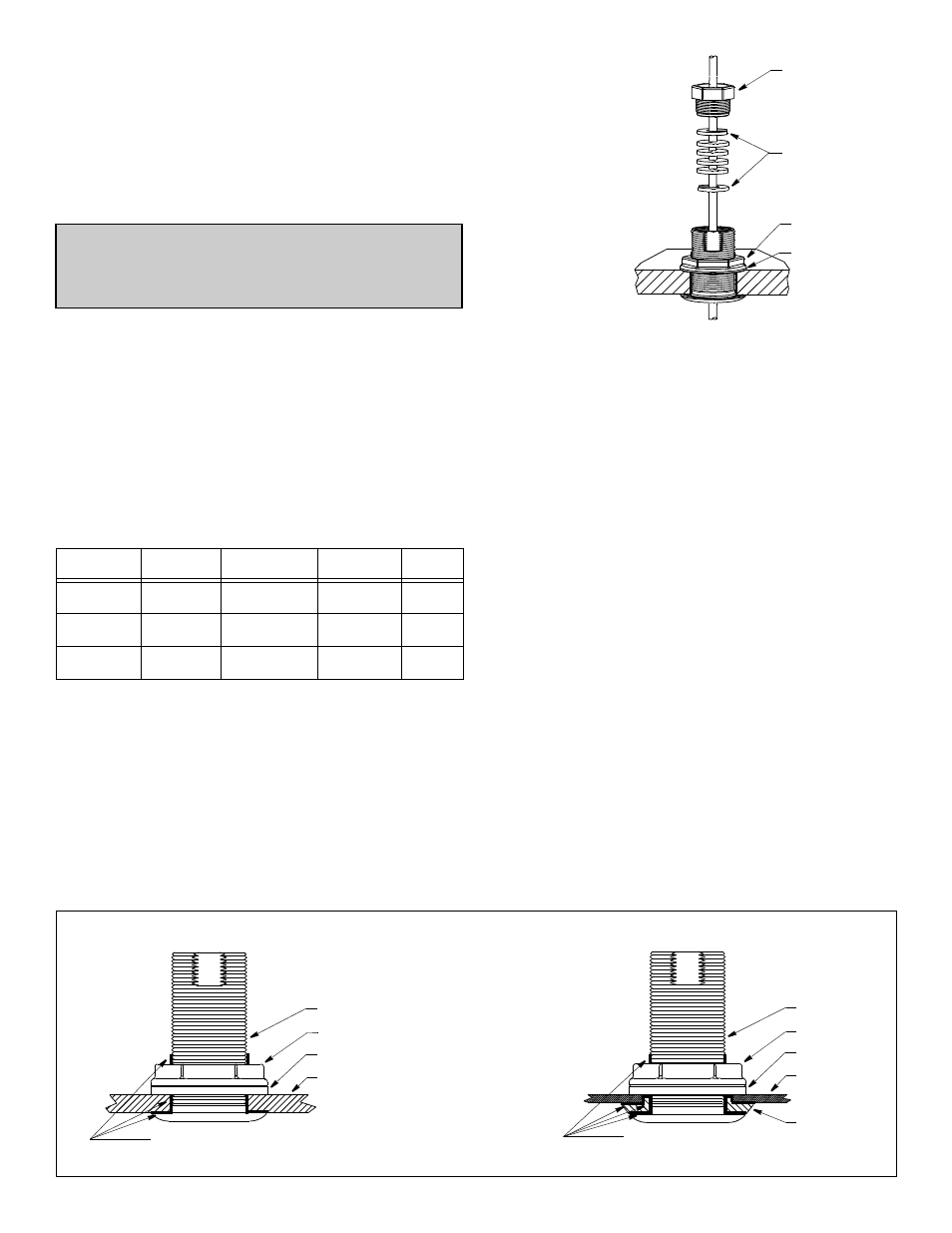Airmar Stuffing Tube User Manual
Installation instructions, Threaded-stem stuffing tube, Installing the stuffing tube

INSTALLATION INSTRUCTIONS
Installing the Stuffing Tube
WARNING: Always wear safety goggles and a dust mask.
WARNING: Metal hull—The stainless-steel stuffing tube must be
isolated from the metal hull to prevent electrolytic corrosion.
WARNING: Metal hull—Be sure the washer on the stainless steel
stuffing tube contacts the hull. Do not tighten the hull nut with the
washer against the isolation bushing as the stuffing tube will not
be firmly installed.
1. At the selected mounting location, inspect the hull interior to
ensure there is adequate clearance for the stuffing tube and any
bolts used to install the transducer. Be sure no cables, ribs, or
struts will interfere. Mark the site for the stuffing tube.
2. From inside the hull, drill a 3mm or 1/8" diameter pilot hole
perpendicular to the hull. If there is a hull irregularity near the
selected mounting location, drill from the outside.
3. Using the appropriate size hole saw, cut a hole from outside the
hull perpendicular to the hull surface (see table).
4. Sand and clean the area around the hole, inside and outside, to
ensure that the marine sealant will adhere properly to the hull. If
there is any petroleum residue inside the hull, remove it with
either a mild household detergent or a weak solvent (alcohol).
Metal hull—Remove all burrs with a file and sandpaper.
5. Remove the compression nut and hull nut from the stuffing tube.
6. Use marine sealant to seal the hull and hold the hull nut. Apply
a 2mm (1/16") thick layer of marine sealant around the flange of
the stuffing tube that contacts the hull and up the sidewall of the
tube (see Figure 1). The sealant must extend 6mm (1/4") higher
than the combined thickness of the hull, rubbery washer, and
the hull nut.
17
-4
23
-0
1 re
v.
04
12
/14
/10
Threaded-Stem Stuffing Tube
Bronze or Stainless Steel
Applications
A stuffing tube seals the hull forming a water-tight conduit for the
cable.
CAUTION: The stuffing tube must be compatible with the hull
material (see table below).
• Metal hull—Use a stainless-steel stuffing tube.
Never install a bronze stuffing tube in an aluminum hull
because electrolytic corrosion will occur.
• Fiberglass hull—The stuffing tube must be installed in solid
fiberglass, not in coring.
Tools & Materials
Safety goggles
Dust mask
Electric drill with 10mm (3/8") or larger chuck capacity
Drill bit: 3mm or 1/8"
Hole saw (see table above)
Sandpaper
Mild household detergent or weak solvent (such as alcohol)
File (installation in a metal hull)
Marine sealant (suitable for below waterline)
Slip-joint pliers
Hull Material
Stuffing Tube
Material
Cable Diameter
Hull
Hole Diameter
Airmar
Part No.
fiberglass
wood
bronze
up to 12mm
(0.47”)
44mm (1-3/4")
33-511-01
fiberglass
wood
stainless steel
up to 12mm
(0.47”)
44mm (1-3/4")
33-541-01
aluminum
steel
stainless steel
up to 12mm
(0.47”)
50mm (2")
33-541-01
IMPORTANT: Please read the instructions completely
before proceeding with the installation. These
instructions supersede any other instructions in your
instrument manual if they differ.
stuffing tube
rubbery washer
hull nut
Figure 1. Installing the stuffing tube
marine sealant on flange
fiberglass or wood hull
Copyright © 2006 - 2010 Airmar Technology Corp.
metal hull with stainless-steel stuffing tube
and sidewall of stuffing tube
hull
stuffing tube
rubbery washer
hull nut
hull
marine sealant on flange
and sidewall of stuffing tube, and
compression
nut
hull nut
isolation
bushing
isolation bushing where it contacts the hull
plastic
washers
rubbery
washer
